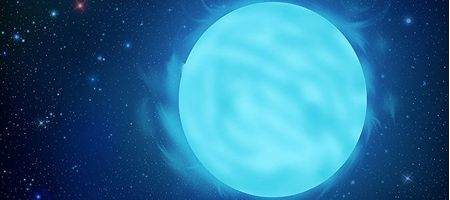Since the 2010 discovery of four stars 300 times as massive as our sun, astronomers have been scratching their heads over how they could have come to exist.

The four were found in the giant star cluster R136 in the nearby galaxy the Large Magellanic Cloud – but nowhere else, despite their enormous luminosity.
Now, though, a group of astronomers at the University of Bonn has an explanation: the ultramassive stars were created from the merger of lighter stars in tight binary systems.
Before their discovery, observations of the Milky Way and other galaxies suggested that the upper limit for stars formed in the present day universe was about 150 times the mass of the sun, and appeared to be universal.
“Not only the upper mass limit, but the whole mass ingredient of any newborn assembly of stars appears identical irrespective of the stellar birthplace,” says Professor Dr Pavel Kroupa of the University of Bonn. “The star birth process seems to be universal.”
But the Bonn group modelled the interactions between stars in a cluster like R136. Their computer simulation assembled the model star by star, creating a cluster of more than 170,000 stars packed closely together.
These highly intensive, star by star calculations are known as ‘direct N-body simulations’ and are the most reliable and accurate way to model clusters of stars; and the Bonn team claims its R136 models are the most difficult and intensive N-body calculations ever made.
“Once these calculations were done, it quickly became clear that the ultramassive stars are no mystery,” says Dr Sambaran Banerjee.
“They start appearing very early in the life of the cluster. With so many massive stars in tight binary pairs, themselves packed closely together, there are frequent random encounters, some of which result in collisions where two stars coalesce into heavier objects. The resulting stars can then quite easily end up being as ultramassive as those seen in R136.”






